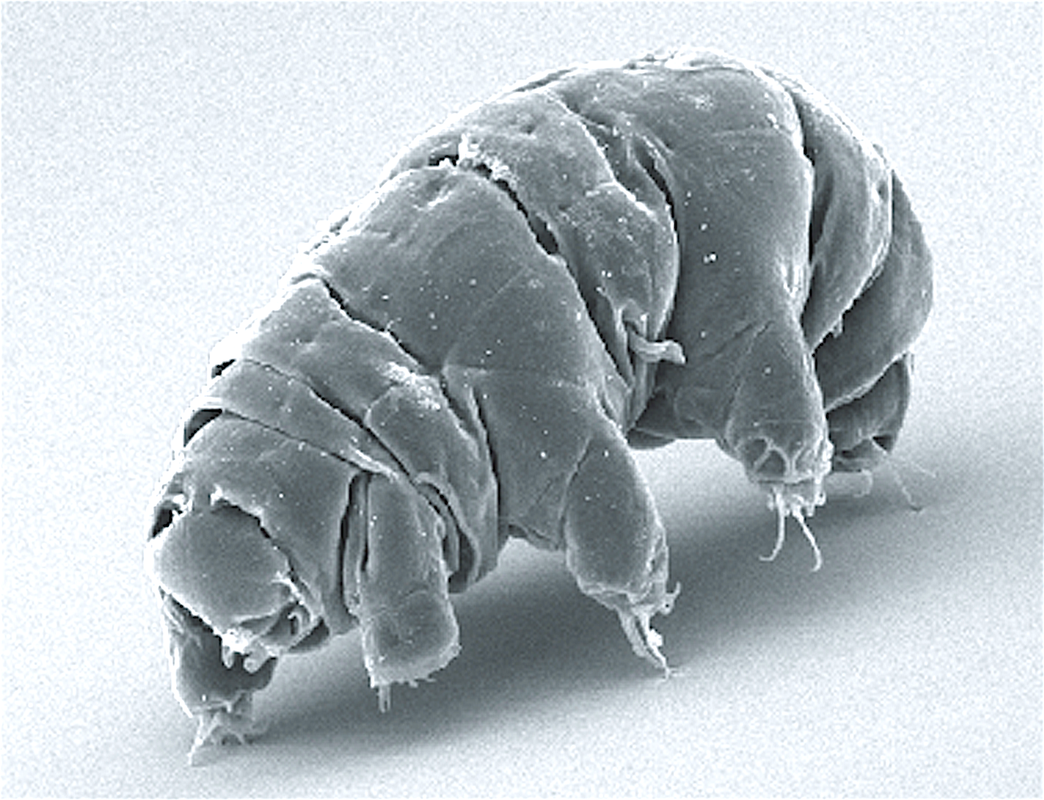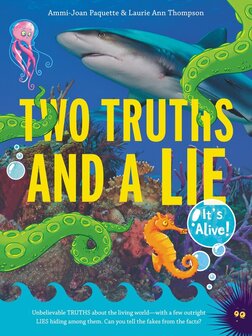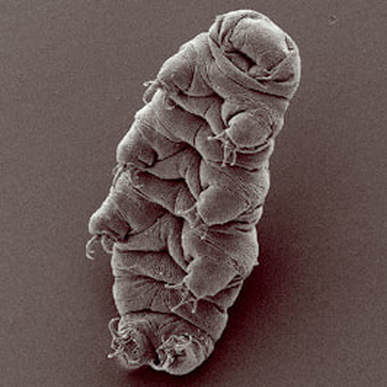 Are you tougher than a tardigrade? I don’t think so. These typically water-dwelling animals may be microscopic in size (barely half of a millimeter when fully grown!), but boy are they fierce. Sometimes called “water bears,” they’re anything but cuddly. Each of their eight legs is decked out with wicked claws. Some tardigrades have full body armor. Most have specialized "sucker" mouths to pierce the cells of plants and animals and suck out their nutrients, while others prefer to consume their tiny prey whole… and that prey might even be another tardigrade! Aside from ending up as someone else’s dinner, though, tardigrades are practically indestructible. They can survive in just about any conditions and take on just about anything life has in store for them. Starvation? No worries there: Tardigrades can go without food for at least 10 years. What about water, you say? No problem. They’ll just suspend their life activities and wait until the drought is over. They can survive at pressures more than six times that of the deepest ocean trenches. And, you’d die from radiation poisoning long before a tardigrade would even notice. Scientists have even tried shooting them into outer space… and the tardigrades survived. Because of their ability to live practically anywhere, these little guys are practically everywhere. Tardigrades can be found on top of Mount Everest and in boiling hot springs, in desert dunes and rainforest canopies, in freshwater lakes and salty oceans, on your roof, outside your front door… maybe even in your bed or on your dinner plate! There are billions and billions of tardigrades… and they’re always making more! Fortunately, there’s no need to worry—tardigrades are completely harmless to humans. In fact, tardigrades may actually end up being our best friends someday. Because they can do so many things that other Earthly animals can’t, scientists are studying tardigrades to try to find solutions to all kinds of problems. Want to dry something out to preserve it, then rehydrate it later? Study how tardigrades do it. Wish we could safely reanimate something that has been frozen? Learn from the tardigrades. Need to protect cells from being damaged by radiation? Figure out why tardigrade cells can withstand it. Who knows? Someday the tough tardigrades might teach us all kinds of handy tricks!  An adult Milnesium tardigrade, an example of more than 1,000 species of the tiny animal. Bob Goldstein and Vicky Madden, UNC Chapel Hill/Wikimedia Common An adult Milnesium tardigrade, an example of more than 1,000 species of the tiny animal. Bob Goldstein and Vicky Madden, UNC Chapel Hill/Wikimedia Common This video shows a tardigrade in real time at 100X magnification. Dmitry Brant via Wikimedia Commons  Laurie Ann Thompson and coauthor Ammi-Joan Paquette begin a fascinating new series with Two Truths and a Lie, a book that presents some of the most crazy-but-true stories about the living world. Some of the stories are too crazy to be true—and readers are asked to separate facts from fakes! "A brief but savvy guide to responsible research methods adds further luster to this crowd pleaser.” —ALA Booklist (starred review)
0 Comments
Leave a Reply. |
The Nonfiction Minute returns on 9/12/20.We publish the Minutes for the coming week on Saturdays so teachers can make plans and we update the Minute for each day, so a new Minute appears at the top of the queue. ArchivesCategories |



 RSS Feed
RSS Feed
